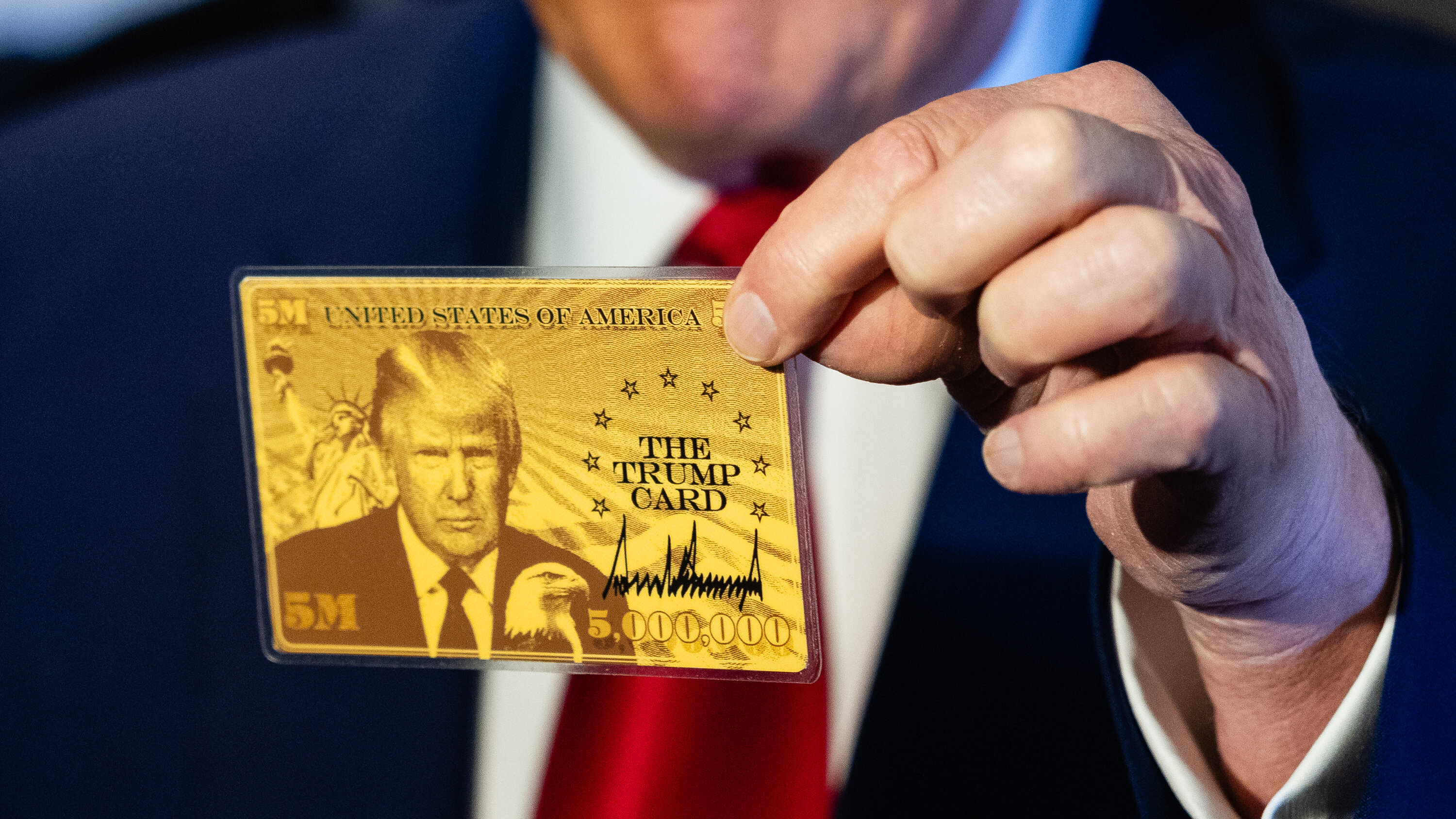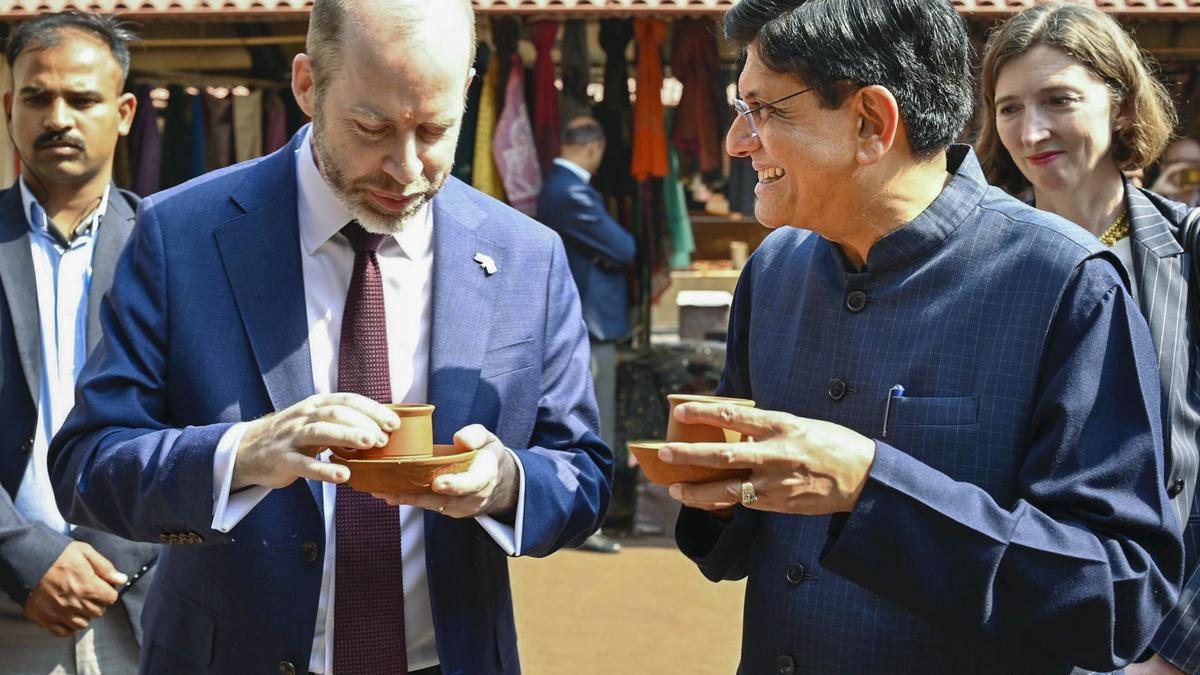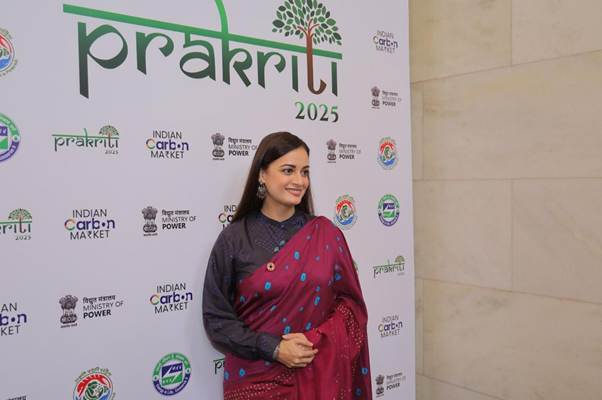Mount Fentale
- 28 Feb 2025
In News:
Mount Fentale, a stratovolcano located in Awash National Park in northern Ethiopia, has recently gained global attention due to its unprecedented release of massive methane plumes. This rare and unusual volcanic event, has raised significant concerns about its potential impacts on climate change and the necessity for better global methane tracking.
About Mount Fentale
Mount Fentale, standing 600 meters above the Rift Valley floor, is known for its elliptical caldera, approximately 6 km in diameter. The volcano's eruptions, historically infrequent, have typically involved the release of lava and ash.
The Methane "Burp" and Its Unusual Nature
What distinguishes this event from typical volcanic activity is the massive emission of methane—58 metric tonnes per hour. Volcanic eruptions are generally associated with carbon dioxide (CO?) and sulfur dioxide (SO?), not methane. Methane, however, is significantly more effective at trapping heat than CO?, being 28 times more potent over a 100-year period. The scale of the methane release is far greater than what is typically associated with volcanic activity, prompting scientific investigations into the cause and potential implications for the global climate.
The methane release is believed to result from deep magma movements that opened underground gas pockets, allowing the methane to escape through newly formed fissures. Unlike a surface eruption, which would involve molten lava, this "burp" suggests that magma at depth caused the gas to surface without the typical visual eruption.
Scientific and Environmental Concerns
Methane is the second-largest contributor to global warming, responsible for around 11% of total greenhouse gas emissions worldwide. Even short-term spikes in methane levels can have a significant impact on global temperature rise. This phenomenon underscores the urgency for enhanced global methane monitoring systems, particularly from natural sources like volcanic eruptions.
While Mount Fentale is not a frequent eruptor, the discovery of massive methane emissions from the volcano highlights the need for comprehensive tracking of both natural and human-driven sources of greenhouse gases. The event suggests that volcanic activity may be a more significant contributor to climate change than previously understood, particularly in the context of methane.
Recent Developments and Earthquake Activity
Following the methane release, Mount Fentale experienced a magnitude 6.0 earthquake the strongest to hit Ethiopia since 1989. This earthquake, likely associated with tectonic movements beneath the volcano, adds a layer of complexity to the ongoing geological activity in the region.
The volcano's stratovolcanic nature, characterized by steep sides built up by alternating layers of lava and pyroclastic material, makes it particularly prone to explosive events. Stratovolcanoes like Fentale are among the most active types of volcanoes on Earth, and their eruptions can have far-reaching environmental impacts.
Global Significance and the Role of Satellite Monitoring
The unexpected methane release from Mount Fentale is not just a local environmental concern but has global implications. As a powerful greenhouse gas, methane's release into the atmosphere accelerates global warming, making it a key target in climate change mitigation efforts. The event highlights the importance of satellite monitoring programs, like those operated by the European Space Agency’s Copernicus program, which detected thermal anomalies in January, and GHGSat, which later confirmed the methane emissions.
The U.S. "Gold Card" Visa

- 28 Feb 2025
In News:
In a significant shift from traditional immigration programs, U.S. President Donald Trump proposed a new immigration initiative—the “Gold Card”—intended to replace the existing EB-5 investor visa program. The Gold Card, requiring a hefty $5 million investment, offers wealthy foreign nationals a direct route to U.S. permanent residency and eventual citizenship, positioning it as a premium alternative to the existing Green Card and EB-5 programs.
Key Differences Between the Gold Card and Green Card
The Green Card remains the standard route to permanent U.S. residency, typically obtained through employment, family sponsorship, or asylum, and involves a detailed, multi-step application process. The EB-5 Investor Visa, introduced in 1990, allows foreign investors to gain U.S. residency by investing a minimum of $1.05 million (or $800,000 in economically distressed areas) in U.S. businesses, provided they create or preserve at least 10 American jobs. The EB-5 program, however, has faced criticism for fraud, misuse, and its association with high-profile real estate projects, including some linked to the Trump family.
The Gold Card, in contrast, offers a simplified and expedited process for wealthy investors to gain permanent residency, bypassing the job creation requirement of the EB-5. For a $5 million investment, foreign nationals can directly purchase their way into U.S. citizenship, bypassing many of the traditional barriers associated with U.S. immigration.
Benefits of the Gold Card Program
- Streamlined Immigration: Investors can gain U.S. residency without the need for job creation or business involvement, unlike the EB-5 program.
- Attracting Wealthy Investors: The program appeals to high-net-worth individuals who can contribute to the U.S. economy through luxury markets, real estate, and business investments.
- Faster Processing: With potentially fewer regulatory hurdles, the Gold Card is designed to have a quicker processing time compared to traditional immigration routes.
- Reduced Fraud Risks: The fixed high-cost nature of the Gold Card may reduce the misuse and fraud that plagued the EB-5 program, offering a more straightforward investment approach.
Potential Concerns and Criticisms
- Ethical and Political Issues: The Gold Card raises questions about "selling" U.S. citizenship, prioritizing wealth over merit, and potentially disadvantaging skilled professionals or individuals seeking to contribute to the U.S. economy.
- Risk of Financial Misuse: Investment-based immigration programs have been criticized for facilitating money laundering, foreign influence, and the movement of illicit capital.
- No Economic Contribution Requirement: Unlike the EB-5, which mandates job creation, the Gold Card does not require any direct investment in U.S. businesses or job creation, limiting its economic impact.
- Legislative and Legal Challenges: Immigration policies in the U.S. are subject to Congressional approval. The Gold Card proposal is likely to face opposition from both Democrats and some Republicans who may object to its perceived elitism or to the legal challenges it might face.
Comparison with Other Investment Visa Programs
The U.S. Gold Card is part of a broader global trend of "Golden Visa" programs, where countries offer residency or citizenship to foreign investors in exchange for significant financial contributions. For instance:
- Portugal: Offers residency for a €500,000 investment in economic development funds, with a pathway to citizenship after five years.
- UAE: Requires an AED 2 million investment for a 10-year residency.
- New Zealand: Offers relaxed requirements for wealthy investors to attract capital following the recession.
These programs, while controversial, aim to attract high-net-worth individuals who can contribute to local economies through investments in real estate, business ventures, or government funds.
India-UK Free Trade Agreement (FTA)

- 28 Feb 2025
In News:
India and the United Kingdom (UK) have resumed negotiations for a Free Trade Agreement (FTA) after an eight-month gap, with the latest round of talks marking the continuation of discussions that began in January 2022. To date, 14 rounds of talks have been held. The FTA aims to strengthen bilateral economic relations by reducing tariff and non-tariff barriers, enhancing market access, and increasing investments between the two nations.
What is a Free Trade Agreement (FTA)?
An FTA is a trade pact between two or more countries that aims to eliminate or reduce import duties on goods traded between them. It also seeks to minimize non-tariff barriers, enhance services trade, and foster investments. By reducing tariffs, FTAs make goods more competitive in foreign markets, which can help boost exports, create jobs, and enhance diplomatic ties.
India’s Trade Strategy and Focus
India has signed 13 FTAs and six preferential trade agreements with various countries and regional blocs, with a recent emphasis on Western nations, particularly the UK, the European Union (EU), and the United States (US). These agreements are part of India’s strategy to diversify its export markets, expand trade, and attract more foreign direct investment (FDI). FTAs with the UK and EU are seen as vital steps in this direction, given the opportunities they present in key sectors such as technology, healthcare, and education.
Key Objectives of the India-UK FTA
The India-UK FTA aims to:
- Boost Trade and Investment: By reducing tariffs and addressing non-tariff barriers, the FTA seeks to facilitate smoother trade between India and the UK.
- Market Access for Services: India is looking to expand its services exports, particularly in sectors like IT, healthcare, and education.
- Enhance Mobility: India aims to secure greater access for students and professionals in the UK, addressing visa and mobility challenges.
- Investment Opportunities: The agreement includes a Bilateral Investment Treaty (BIT), which will safeguard investments and create a more favorable environment for foreign investment.
Benefits of the India-UK FTA
For India, the FTA presents opportunities in both merchandise trade and services:
- Merchandise Trade: India's exports to the UK totaled $12.9 billion in FY24. The FTA is expected to provide tariff reductions on Indian goods, including textiles, apparel, footwear, cars, marine products, and agricultural exports such as grapes and mangoes. These goods currently face relatively low to moderate tariffs in the UK, and the FTA would make them even more competitive.
- Services: Indian sectors like IT, healthcare, and education are poised to benefit significantly from the FTA due to greater market access.
- Investments: The BIT will promote UK investments in India by providing a more stable and transparent investment environment, including mechanisms for dispute resolution.
For the UK, the FTA would reduce high import tariffs on certain goods, making UK products more competitive in the Indian market. Key UK exports such as automobiles, whisky, and machinery, which currently face high tariffs in India, would benefit from reduced duties.
Key Demands and Challenges
While both nations stand to gain from the FTA, several challenges and demands need to be addressed:
- India’s Demands: India seeks greater access for its students and professionals in the UK, alongside more favorable market access for key goods. It also wants to ensure that its domestic industries are protected from a surge in imports, particularly in sensitive sectors.
- UK’s Demands: The UK is pushing for significant cuts in import duties on products like scotch whisky, electric vehicles, and lamb meat. Additionally, the UK seeks improved market access for its services in India, particularly in telecommunications, legal, and financial sectors.
- Dispute Resolution: One of the key areas of negotiation is the dispute resolution mechanism in the BIT. India prefers foreign firms to exhaust local judicial remedies before seeking international arbitration, while the UK has concerns about the efficiency of India’s judicial system.
Sectoral Gains
- Technology: Both countries can collaborate on digital trade, innovation, and technology transfer, fostering mutual growth in the tech sector.
- Green Energy: The FTA could also serve as a platform for enhanced cooperation in renewable energy, aligning with both countries' commitments to climate goals.
- Education and Healthcare: Increased opportunities for educational exchanges and professional mobility in these sectors would enhance bilateral cooperation.
Way Forward
To successfully conclude the FTA, both India and the UK need to:
- Balance Tariff Reductions: Ensure that tariff reductions are fair and that sensitive domestic industries are adequately protected.
- Enhance Market Access: Address concerns related to visa and mobility, ensuring that professionals and students from both countries can benefit from easier movement.
- Finalize Investment Protections: Ensure that the BIT offers clear and mutually beneficial terms for dispute resolution and investment safeguards.
- Strengthen Sector-Specific Cooperation: Focus on areas such as technology, green energy, and digital trade to drive innovation and growth.
PRAKRITI 2025

- 28 Feb 2025
In News:
- The International Conference on Carbon Markets – PRAKRITI 2025 was inaugurated by the Minister of Power and Housing and Urban Affairs.
- Organized by the Bureau of Energy Efficiency (BEE) under the Ministry of Power, the event served as a major platform for global dialogue on carbon markets, climate finance, and sustainability strategies.
Key Highlights:
PRAKRITI 2025 (Promoting Resilience, Awareness, Knowledge, and Resources for Integrating Transformational Initiatives) aimed to:
- Understand the functioning of Indian and global carbon markets.
- Discuss challenges, dynamics, and opportunities in carbon trading.
- Strengthen carbon credits, offset mechanisms, and compliance systems.
- Promote renewable energy, green innovations, and ecosystem-based interventions.
- Foster collaboration between governments, industries, and citizens.
Insights from PRAKRITI 2025
- Global Linkages:India’s carbon market will increasingly be influenced by global policies such as the European Union’s Carbon Border Adjustment Mechanism (CBAM), which imposes carbon pricing on imports like steel and aluminium. Indian industries must prepare to maintain competitiveness.
- Carbon Market Mechanisms:
- Under Article 6 of the Paris Agreement, carbon trading allows entities to buy carbon credits to offset emissions.
- Carbon credit = reduction of 1 metric ton of CO? or equivalent GHGs.
- India’s Progress:
- India ranks second globally in Clean Development Mechanism (CDM) project registrations.
- The Perform, Achieve and Trade (PAT) scheme, regulated by BEE, has saved over 106 million tonnes of CO? since 2015.
- Development of a domestic carbon market is a priority to align with global standards and leverage international finance.
- Challenges Highlighted:
- Need for robust Monitoring, Reporting, and Verification (MRV) frameworks.
- Ensuring fair benefit distribution among stakeholders.
- Developing policies tailored to India’s economic and social realities.
- Increasing private sector engagement and incentivizing renewable energy developers.
Bureau of Energy Efficiency (BEE)
- Established: 1 March 2002 under the Energy Conservation Act, 2001.
- Mandate: Develop policies and programmes to promote energy efficiency, coordinate with stakeholders, and promote self-regulation within market principles to reduce India's energy intensity.
- Role in Carbon Market: BEE is the nodal agency regulating India’s carbon trading schemes and energy conservation initiatives.
AI in Indian Agriculture

- 28 Feb 2025
In News:
Microsoft Chairman Satya Nadella recently showcased the transformative impact of Artificial Intelligence (AI) in Indian agriculture through Project Farm Vibes in Baramati, Maharashtra, where AI-driven techniques led to a 40% increase in crop yields while reducing resource consumption significantly.
What is Project Farm Vibes?
Developed by Microsoft Research in collaboration with the Agricultural Development Trust, Baramati, Project Farm Vibes is an open-sourced AI suite aimed at making farming more data-driven, efficient, and sustainable.
Key Technologies:
- Azure Data Manager for Agriculture: Aggregates satellite imagery, weather data, and sensor inputs for a complete view of field conditions.
- FarmVibes.AI: Analyzes soil moisture, temperature, humidity, and pH to offer precise, AI-driven farming recommendations.
- Agripilot.AI: Provides real-time, localized, and personalized farming advice, including in regional languages.
Impact:
- 40% increase in crop production with healthier crops.
- 25% reduction in fertilizer costs through precision spot fertilization.
- 50% decrease in water usage, promoting sustainable irrigation.
- 12% reduction in post-harvest wastage, improving profitability.
- Environmental gains through reduced chemical runoff, soil erosion, deforestation, and greenhouse gas emissions.
How is AI Revolutionizing Indian Agriculture?
- Smart Irrigation:
- AI-based soil and climate analysis optimizes irrigation.
- Schemes like "Per Drop More Crop" are integrating AI with drip and sprinkler systems.
- IoT-driven irrigation systems by ICAR automate water supply based on real-time data.
- Pest and Weed Control:
- The National Pest Surveillance System uses AI to detect pests early and issue real-time alerts.
- AI-enabled computer vision distinguishes between crops and weeds, minimizing herbicide use.
- Economic Impact:
- The AI in agriculture market is projected to grow from USD 1.7 billion (2023) to USD 4.7 billion (2028) at a CAGR of 23.1%.
- Tools like Kisan e-Mitra, an AI chatbot, are improving farmer access to government schemes like PM-Kisan.
Challenges in AI Adoption
- Lack of Awareness: Limited digital literacy in rural areas hampers effective use.
- High Costs: Expensive AI tools like drones and IoT devices are unaffordable for small and marginal farmers (85% of farming community).
- Infrastructure Gaps: Poor internet connectivity; over 25,000 villages lack mobile/internet access.
- Data Issues: AI needs accurate, real-time agricultural data, which is often missing or unreliable.
- Limited Customization: Generic AI models fail to address India's diverse agro-climatic conditions, requiring localized solutions.
Way Forward
- Strengthening Data Frameworks: Utilize platforms like AgriStack and IDEA for integrated farm data management.
- Develop Region-Specific Solutions: Leverage National AI Centres of Excellence to create localized AI applications.
- Improving Digital Infrastructure: Expand PM-WANI and BharatNet to enhance rural connectivity.
- Farmer Skilling and Awareness: Scale initiatives like NeGPA and FutureSkills PRIME for farmer education in digital technologies.
- Financial Support: Promote subsidized loans and investments through the Digital Agriculture Mission (2021-2025) to empower agri-tech startups and farmer cooperatives.
